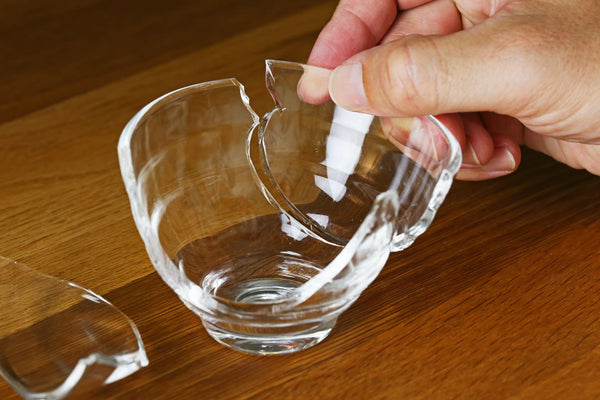
Cracked Glass, Golden Repairing Unveiling the Potential of Kintsugi
What is Kintsugi?

Kintsugi is a beautiful traditional Japanese technique for restoring broken pottery and glassware. In this artistic process, broken pieces are carefully joined together using lacquer and finished with a dusting of gold powder to create new patterns and designs. This technique aims to "bring back the original beauty" rather than "restore the broken object to its original state.
Kintsugi embodies a philosophy that embraces not only masterful repair, but also accepts the longevity and aging of objects and celebrates their transformation. The unique aesthetic and restoration process does not emphasize the defects of the object, but rather encourages the discovery of new value in the process. This technique symbolizes the Japanese aesthetic that beauty resides in imperfection, not in perfection.
Can glass be restored by Kintsugi?
As a conclusion, it is possible, but it is more difficult depending on the type of breakage. For example, it is relatively easy to repair a small chip, but it is a different story if the broken part is large and completely broken. Glass is incompatible with lacquer, so it is very difficult to bond it well. The broken part is sharp and the risk of injury is high, and there is a possibility that the glass will break again after kintsugi is done, so keep that in mind. Some craftsmen do not accept kintsugi for glass, which is a testament to the difficulty of the process.
How to restore a glass by kintsugi
Nevertheless, when a precious glass breaks, you would like to fix it somehow. Some kintsugi craftsmen may be able to accept this. You can try to find a specialist who accepts kintsugi repair in your neighborhood, or find a workshop that accepts repair by mail.
Another option is to try repairing the piece yourself using a kintsugi kit. It may seem difficult at first, but if you follow the instructions carefully, you may gradually get the hang of it. It is not easy because of the detailed work involved, but we recommend that you enjoy the process and do not forget to work on it.
 ETSY
ETSYPoints to keep in mind when doing Kintsugi
There are a few things to keep in mind when doing kintsugi yourself. It is not limited to glassware, but by doing kintsugi the right way, you can enjoy the process even more.
Do not rush until it is completely dry
It takes roughly one month to complete the entire process of kintsugi. If you proceed to the next step before the lacquer is completely dry, the bonding surface will be distorted and there is a high possibility that the piece will be damaged again after kintsugi. It depends on the degree of damage and your location (temperature, humidity, etc.), but we recommend that you take your time and enjoy the process.
Check if the ingredients are food-safe.
Some kintsugi kits contain substances that may be harmful to your health if consumed. While some kintsugi kits have advantages such as quick drying and ease of use, some kintsugi kits may have negative effects on the body if consumed, so check before purchasing. For example, if you are displaying a broken vessel as an ornamental item, it is not so important whether it is food-safe or not, so please check it on a case-by-case basis.
Do not touch lacquer directly with your hands
Directly touching lacquer with your hands may cause a rash. If you are tolerant to it, there is no problem to touch it directly with your hands, but if you get a rash, it is safer to work with gloves. There is a theory that people will become accustomed to the lacquer after continued use, but this has not been scientifically proven, so care should be taken. It would be better to take care to avoid rashes as much as possible.
